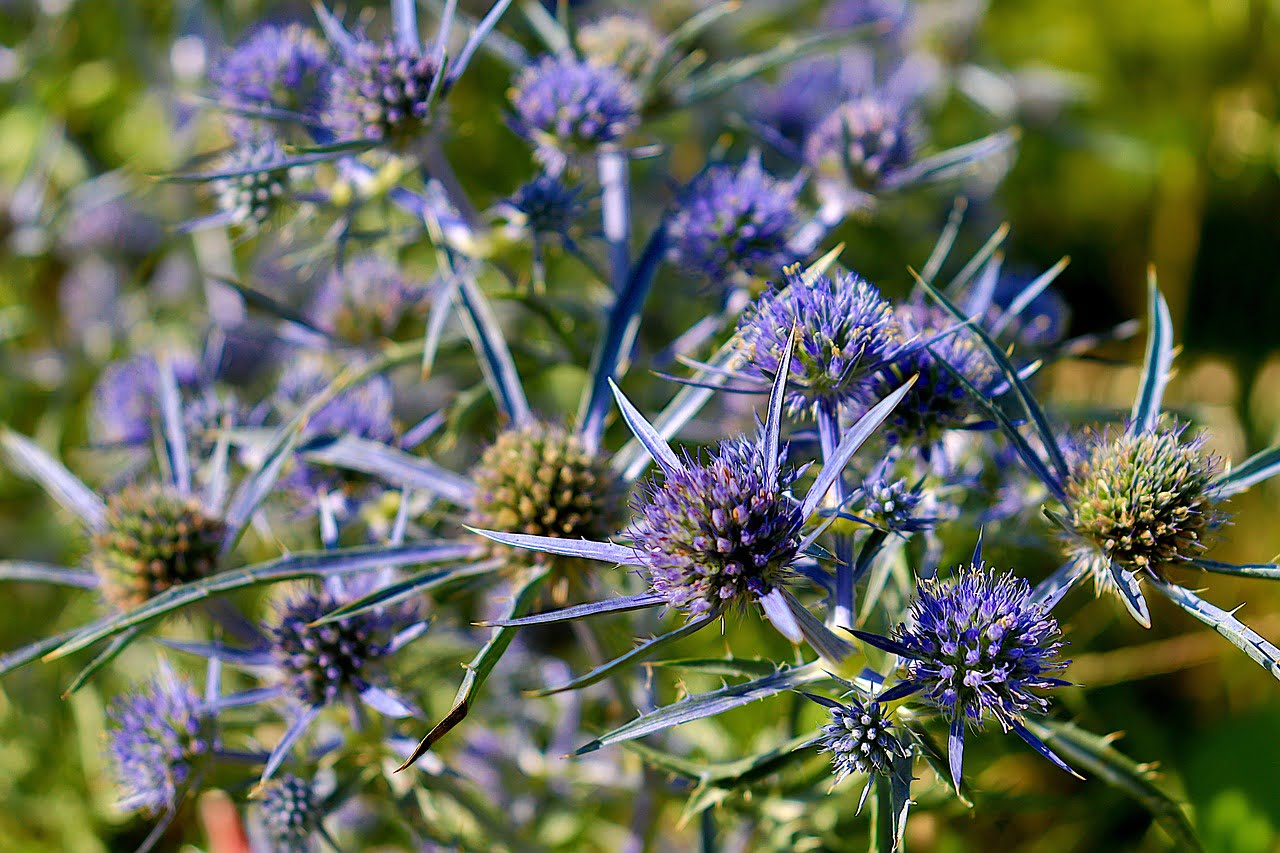
Understanding Eryngium
Eryngium, also affectionately referred to as sea holly, is a plant that captures the essence of the sea with its spiky, azure appearance. To truly appreciate and cultivate this striking plant, it’s essential to gain a deeper understanding of its unique characteristics and the reasons why it’s a valuable addition to any garden.
1. What is Eryngium?
Eryngium belongs to the Apiaceae family, which includes well-known plants like carrots and parsley. However, Eryngium distinguishes itself with its captivating, globe-like flower heads, surrounded by a fascinating array of spiky bracts. These bracts mimic the look of thistles, hence the plant’s colloquial name “sea holly.” Despite their prickly appearance, Eryngiums are surprisingly easy to cultivate, making them a favorite among gardeners.
2. Varieties of Eryngium
Eryngium is a diverse genus encompassing over 250 species, each with its own unique charm. Here are a few popular Eryngium varieties to consider for your garden:
- Eryngium alpinum: This variety boasts deeply lobed, silver-blue leaves and striking blue flowers, creating a mesmerizing contrast that can be a focal point in your garden.
- Eryngium planum: Known for its vibrant blue flowers, Eryngium planum is a classic choice for gardeners due to its intense color and resilience.
- Eryngium giganteum: As the name suggests, this species can grow to impressive heights, producing large, globe-shaped flower heads that are not only visually stunning but also attract a plethora of pollinators.
Planting Eryngium
With a solid understanding of Eryngium’s unique features, let’s move on to the essential steps for successfully planting and nurturing these captivating plants in your garden.
Selecting the Perfect Location
1. Sunlight Requirements
Eryngium thrives in full sunlight, making it essential to choose a garden spot that receives at least 6-8 hours of direct sunlight daily. More sunlight means more vibrant and robust Eryngium plants.
2. Soil Conditions
Eryngiums prefer well-draining soil with a slightly acidic to neutral pH level. To ensure proper drainage, consider amending your soil with organic matter such as compost. Well-draining soil is crucial to prevent waterlogged roots, which can be detrimental to Eryngium’s health.
Planting Your Eryngium
3. Timing
Planting Eryngium at the right time is crucial. Aim for the spring or early summer when the soil has warmed up, and the risk of frost has passed. Cold temperatures can hinder initial growth, so it’s best to avoid planting during frosty periods.
4. Proper Spacing
To accommodate the mature size of Eryngium and promote adequate air circulation, space these plants approximately 12-18 inches apart. Proper spacing ensures that each plant has room to flourish and prevents overcrowding.
5. Correct Planting Depth
When planting Eryngium, dig a hole slightly larger than the root ball, and ensure that the plant is placed at the same depth as it was in its container. This planting depth allows the crown to rest just above the soil surface.
Nurturing Your Eryngium
Eryngiums are generally low-maintenance, but some care practices will help ensure their health and beauty in your garden.
6. Watering
Eryngiums are naturally drought-tolerant, so it’s vital not to overwater them. Allow the soil to dry out between watering sessions. Deep but infrequent watering encourages strong root development.
7. Pruning
Maintaining a tidy appearance and encouraging continuous blooming is achieved through regular pruning. Remove spent flower heads to redirect the plant’s energy toward producing new blooms.
8. Fertilizing
In the spring, apply a balanced, slow-release fertilizer to provide essential nutrients for healthy growth. A well-fed Eryngium will reward you with robust foliage and vibrant blossoms.
Conclusion
In conclusion, Eryngium, or sea holly, is a captivating addition to any garden. By understanding its unique characteristics, selecting the right location, and following proper planting and care techniques, you can cultivate Eryngium successfully. Watching these plants thrive and grace your garden with their striking appearance is a rewarding experience for any gardener.
FAQs (Frequently Asked Questions)
1. Can I grow Eryngium in containers?
Absolutely! Eryngium can thrive in containers, provided you use pots with good drainage and a well-draining potting mix. This versatility makes them an excellent choice for gardens of all sizes, including balconies and patios.
2. Are Eryngium plants deer-resistant?
Yes, Eryngium is known for its deer-resistant properties. If you have a garden frequently visited by deer, planting Eryngium can help protect your other plants from being nibbled on.
3. How long does it take for Eryngium to bloom?
Eryngium typically starts blooming in the second year after planting. However, the exact timing may vary depending on the specific variety and growing conditions in your garden.
4. Can Eryngium tolerate cold winters?
Most Eryngium varieties are hardy and can withstand cold winters with proper mulching and protection. This resilience makes them suitable for a wide range of climates.
5. Do Eryngium plants attract pollinators?
Indeed, Eryngium plants are attractive to pollinators such as bees and butterflies. By incorporating Eryngium into your garden, you not only enjoy their beauty but also contribute to the well-being of these important pollinators, enhancing the overall biodiversity of your outdoor space.